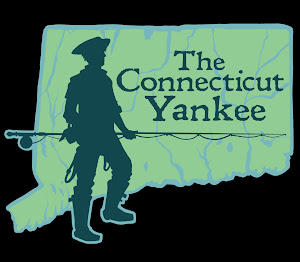My
wife and I just returned from our honeymoon in Costa Rica. We enjoyed a
week-long stay at Playa Conchal in the Guanacaste Province. Set along the Pacific
Ocean, this stretch of shoreline is famous for its white sand
made from billions of broken down shells, or conchas. While it was far from a
fishing vacation, a guided trip was high on our agenda. Costa Rica
offers so many angling opportunities from offshore marlin to inshore snook, yet our sights were set on roosterfish...from a kayak!

At 6 a.m. on a Tuesday, there we were—two newlyweds in a taxi van rolling down a
dirt road to the small, coastal village of Potrero. The driver left us at the water’s
edge where we met Ralph,
our heavily recommended guide for the day, who was readying three kayaks. It was dead low tide overlooking beautiful Potrero Bay and howler monkeys were making
their presence known in the treeline behind us. A few locals
were fishing in the surf, but instead of rods they were using wooden spools,
line and a simple metal lure. They whipped their offering out into the water and retrieved it by wrapping it back around the spool. I soon learned casting
distance was not a factor because the whole bay was teeming with life. There
were countless tiny sardines so densely packed that they turned the turquoise
water brown. Right in the wash there were bigger fish slashing
through the schools of bait sending them into the air and raining back down.
Since it was our first time fishing from kayaks, Ralph gave us a brief primer before heading out. At first he set us up for light-tackle trolling around the shoreline, which gave him time to secure enough bait for the real mission at hand. Mosey and I cruised along tight to the rocky coast with small lures trailing behind us. My wife had the hot hand and landed a few feisty Spanish mackerel that were kept for the table. In the meantime, Ralph landed four precious moonfish using a Sabiki-type rig similar to one I use to catch herring back home. Silver in color and the size of a saucer plate, moonfish are high on the preferred dining menu of roosters in Potrero Bay. They were put in Ralph's handmade PVC container and towed behind the kayak, keeping the baitfish lively throughout the trip.
 |
| Moonfish a.k.a roosterfish candy |
With bait on board, it was time to switch to beefier conventional gear and paddle a few hundred yards out into the Bay. Being that far from shore felt a little unnerving at times, but that is where the big roosters roamed. A circle hook was pierced through the back of the bait and several yards of line was let out behind the kayak. The offering was dropped down with no additional weight and we began slowly trolling between two rocky outcroppings. Not more than five minutes passed before we heard the sweet sound of line peeling from the spool. I came tight to the fish and the circle hook did the rest, burying itself into the corner of the fish's mouth. It was only a little guy, yet the fight was incredible. After a couple of minutes I saw flashes beaming from under the kayak, then the seven long spines of dorsal fin from which the roosterfish gets its name. I grabbed it by the knuckle of its tail for a quick photo before harpooning it head first back to the depths.


Now it was Mosey's turn. A fresh bait was hooked and lowered down to the money zone. She didn't have to wait long until a rooster gobbled it up took her for a nice Costa Rican sleigh ride around the Bay. Ralph coached her well and Mosey looked like a pro subduing her first roosterfish (handling it for a photo was another story!). By this point the trip was a major success, yet our guide was determined to go bigger. We paddled out to deeper water and dropped down our largest bait. There was a longer wait this time, but the next run-off was well worth it. Right away by its initial run I could tell this fish was in another size class altogether. The kayak was getting towed and turned with ease and the rooster took much longer to tire out. Ralph even strategically slapped his paddle on the water in order to drive the fish towards the shallows. The tug of war lasted several more minutes before I hoisted up my prize. Mosey did a great job capturing the moment then the fish kicked off like a mad man. It was in the middle of that fight where my deep respect and admiration for roosterfish began.
 |
Photo credit: Mosey Broatch
|
The overall experience was more than I could have imagined and called for a proper celebration with cold cervezas. Before heading back to the resort, we hunkered down at a beach side bar and shared fish stories and laughs with our guide. Looking out over Potrero Bay, it was mind-boggling to comprehend how rich it is with marine life--a different universe than what I'm used to back home. Ralph is a lucky man to have this oasis almost to himself. I hope to return to Costa Rica again someday and take better advantage of the epic fishing opportunities it holds. This is one fishing trip that I will never forget.




































































.jpg)



























